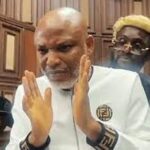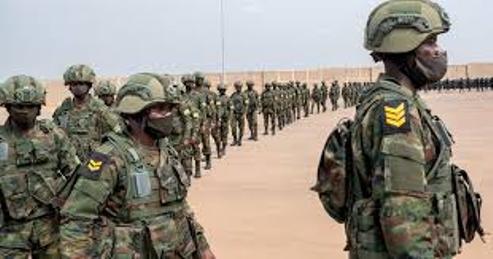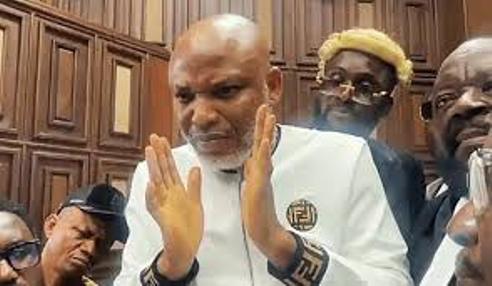LAGOS JUNE 3RD (NEWSRANGERS)-Most countries in the world today are respected or feared as a result of their military strength or how large their military personnel are. We can use the very recent case of Russia and Ukraine as an example of two countries at war with one having a larger army than the other, hence its decision to invade.
However, any progressive state wanting to safeguard its boundaries and interests need a powerful military force. Only a few African countries are still lacking in terms of having a large army. In terms of the top ten largest armies in Africa in 2024, the African continent is holding its own against global giants.
We would be using evidence from the GFP to give a proper ranking of the top 10 largest armies in Africa. The Global Fire Power, shortened as GFP, is a leading source of military-related information. The organization’s results demonstrate that Africa is a hub of power in the contemporary world. Our focus in this article is to rank these countries from one to 1-10, in terms of military personnel as well as equipment.
1) Egypt:
Here we have Egypt as number one on the list with the largest army in Africa. Egypt’s military might put’s them ahead of the pack in terms of military might, owing to the sheer magnitude of its armed forces. The North African superpower is ranked 12th in the world, with a force of 1,314,500 men and women.
The Egyptian Navy, Egyptian Army, Egyptian Air Force, and Egyptian Air Defense Command makes up the Egyptian Armed Forces. It has a frontline army of about 500,000 soldiers, much surpassing all of its African counterparts.
It possesses about 10,000 armoured war vehicles, 60,000 logistics trucks, 1,092 aircraft, and substantial oil reserves. Its naval might, which includes both conventional carriers and nuclear-powered submarines, sets it out as being unique.
Forces in Action: Egypt has Africa’s biggest active military, with 500,000 troops. The average number of active military troops in African nations is 47,004.5.
Reserve Forces: are a subset of the regular military. Egypt has Africa’s largest reserve military, with 479,000 troops. Africa’s governments, on average, retain a reserve force of 19,746.1 personnel.
Forces of the paramilitary: With 397,000 members, Egypt possesses Africa’s largest paramilitary force. In Africa, the estimated paramilitary force strength is 19,141.2 personnel.
2) Algeria
Algeria has the biggest defence spending in Africa. Algeria spends roughly 6% of its GDP (estimated at $10,304 million dollars) on defence. Its defence budget as a proportion of GDP is the third highest in the world.
Algeria has Africa’s second-largest military force. Algeria has a military force of 467,200 people, with a per-capita ratio of 11.2 army personnel per 1000 people. There are 130,000 active military soldiers, 150,000 reserve people, and 187,200 paramilitary forces in the country’s military.
Algeria has Africa’s second-largest combat tank force. Algeria has a deployable force of 1,195 tanks on land. Algeria’s air force consists of 120 military aircraft and 77 helicopter gunships for aerial defence. Algeria has Africa’s second-largest naval fleet. The country is in upheaval after its long-serving president resigned, but the military has found a voice as the country’s civil unrest and instability persist.
3) Morocco
Morocco has Africa’s third-largest defence expenditure. Morocco’s defence expenditure is predicted to be 3.10 per cent of GDP (US$3,721 million). Its defence budget as a proportion of GDP is the third highest in Africa.
Morocco has Africa’s third-largest military force. Morocco’s military consists of 195,800 active soldiers (Africa’s third-biggest), 150,000 reserve personnel, and 50,000 paramilitary forces, for a total of 395,800 military members per 1000 people.
Morocco maintains a mobile force of 434 tanks on land. Morocco’s air force consists of 92 fighter jets and 33 Apache helicopters for aerial defence.
4) Eritrea
Eritrea would come as a surprise mention on this list, according to World meter’s elaboration of the most recent United Nations data, Eritrea’s current population is 3,629,109 as of Friday, March 11, 2024. This shows the population of people in Eritrea who are currently in the military.
Eritrea is a country in Eastern Africa’s Horn of Africa area, with Asmara as its city centre (and largest city). Djibouti is to the southeast, Ethiopia is somewhere to the south and Sudan is towards the west. Eritrea’s Red Sea coastline spans for kilometres to the northeast and east. The Dahlak Archipelago and other Hanish Islands make up the nation’s total size of roughly 117,600 km2 (45,406 sq mi).
Eritrea’s military consists of 201,750 active personnel (Africa’s second-largest) and 120,000 reserve personnel, for a total of 321,750 military men per 1000 people. It has the biggest military expenditure per capita in Africa. Eritrea possesses a mobile force of 270 tanks on land. Eritrea’s air force consists of 20 combat aircraft and eight attack helicopters for aerial defence.
Total Military Force Per Capita: Eritrea has the greatest overall military per capita in Africa, with 53.9 soldiers per 1000 people. For African countries, the mean total military presence per capita is roughly 4.2 per 1000 people
5) Nigeria
Nigeria is an obvious mention on the list as the giant of Africa, one of the most populous nations in the world and actually the most populous nation in Africa, they would be expected to be among the top 5 countries with the largest army in Africa.
Perhaps you’ve heard of the Nigerian military’s history and great training. Over 120,000 military soldiers serve to defend the country’s population of 214,028,302. For a nation with such a large population, a military-to-population ratio of 0.1 per cent seems appropriate. Nigeria’s most recent power index is 0.6241.
For almost ten years now, the Nigerian army has been in constant fights with the Boko Haram insurgency. Despite substantial victories during Buhari’s first term, there have been a few losses in the last year, since the army is more equipped for conventional combat than the militants’ guerilla methods.
A substantial domestic oil supply, like in Algeria and Egypt, reduces the financial burden of armed war. Nigeria possesses around 1,800 armored vehicles, 250 tanks, 6,000 logistics vehicles, almost 300 aircraft, and 25 high-powered naval warships at its disposal. When compared to other nations in Africa and in the world with marine borders, the country is lacking in naval might.
6) Sudan
Sudan is probably the most divisive inclusion in this year’s list. The military deposed longstanding dictator Omar al-Bashir after months of agitation and a sit-in at the military’s headquarters.
The military might of al-regime Bashir’s built over decades, and it has received money from Saudi Arabia in the months after he seized control. Sudan’s defence budget is anticipated to be $722 million dollars (1.60 per cent of its GDP). Sudan’s military consists of 104,300 active soldiers and 105,000 paramilitary members, for a total of 209,300 military personnel per 1000 people.
Sudan has Africa’s third-largest battle tank force. It also has a mobile force of 465 tanks on land. Sudan’s air force consists of 63 military aircraft and 45 apache helicopters for aerial defence.
Sudan is ranked 77th out of 140 countries in the annual GFP rating. Sudan has a power index score of 1.5159, which is quite high.
7) South-Sudan
On July 9, 2011, the Republic of South Sudan officially became the world’s newest country and Africa’s 55th. Conflicts erupted again in December 2013 and July 2016, undermining the progress made in development since independence and worsening the humanitarian crisis. As a result, a decade after independence, South Sudan is mired in a web of economic stagnation, fragility and instability. Poverty exists everywhere, and it is exacerbated by displacement, intercommunal conflict and external shocks.
The signing of the most recent cease-fire in September 2018 and the subsequent creation of a governing coalition in February 2020 has given rise to a lot of optimism for recovery and peacebuilding. In 2019, the number of conflict incidents dropped dramatically, allowing some refugees who had previously been distributed in the country to return.
Kiir became President of South Sudan after the country’s independence in 2011, and the SPLA assumed the position of the new republic’s permanent army. The SPLA was renamed South Sudan Defence Forces (SSDF) in May 2017, and the name was changed again in September 2018 to South Sudan People’s Defence Forces.
According to estimates from 2018, the army had 185,000 troops and the minor South Sudan Air Force had an undetermined number of men. The SSPDF consisted of the Air Force, Ground Force, Air Defence Forces, and Presidential Guard as of 2019. South Sudan spends around 3.40 per cent of its GDP (about US$87 million) on defence. Its defence budget as a proportion of GDP is the second-highest in Africa.
South Sudan has an 80-tank mobile force on land. South Sudan maintains a Heli-force of nine assault helicopters for aerial defence.
8) Ethiopia
Ethiopia is the only country in the Top 8 without a sea border while being landlocked and lacking the benefits of the top three. Ethiopia has put a significant amount of effort into strengthening its army and air force (the GFP does not punish landlocked countries for not having a naval force).
Prime Minister Aby Ahmed has maintained a good rapport with the military since assuming power, with military members seen touring some of the Prime Minister’s projects and listening to his plans for the country.
Internal instability has plagued the country for years, and a robust military has become essential in light of the danger posed by the terrorist organization al-Shabaab. Ethiopia now has a 140,000-strong active force with almost 2 million people getting up to the age of joining the military.
Ethiopia has 446 tanks on the ground. Ethiopia has a 26-military aircraft in their air force and a 25-attack helicopter for aerial defence.
9) Democratic Republic of Congo (DRC)
Another surprise addition to the list is DRC. The DRC is Currently the second largest country in Africa, with 86 million inhabitants. The UN Stabilization Mission, known as Blue Helmets, is still present in the country because the country’s own forces are not fully prepared to handle peacekeeping operations.
After a period of civil war, the country’s security reform began in 2003, and the effort to incorporate armed non-state players into national security institutions is still ongoing. Despite having a large active force of 134,000 troops, it nevertheless lags behind in training when juxtaposed with other forces.
However, The Democratic Republic of Congo has a deployable force of 149 tanks on the ground. The Democratic Republic of Congo maintains a military air force of six combat aircraft and nine attack helicopters for aerial defence.
10) Angola
Angola is a nation on Southern Africa’s west coast. It is the 7th largest nation in Africa and the second-largest Portuguese-speaking country in terms of both land and population (after Brazil). Namibia is to the south, the Democratic Republic of Congo to the north, the Atlantic Ocean to the west and Zambia to the east. Angola has an exclave province, Cabinda, which shares borders with both the Republic of Congo and the Democratic Republic of Congo. Luanda is the country’s capital and most populous city.
The army, navy, and air force are the three components of the Angola Military forces (FFA). President Lourenco’s change plan swept through the armed forces earlier this year, with 88 generals dismissed from their jobs.
This happened just a year after the chief of staff was fired when the attorney general implicated him in a corruption investigation.
The eggs from the “Golden Goose” (oil reserves), as the President refers to them, have enabled the Southern African country to fund a significant military budget. It now possesses a standing army of up to 100,000 people, as well as 585 armoured battle cars, 300 tanks, 285 aircraft, and a 57-ship navy.
In addition, Angola’s defence budget is anticipated to be $1,471 million dollars (1.60 per cent of its GDP).
In summary, this is our own ranking based on the top 10 countries with the largest army in Africa, based on certain parameters checked. Based on certain other parameters, the ranking may change and certain countries would have to make way for some other countries. But on a general note, countries like Egypt, Nigeria, Algeria and Morocco would most likely make the list of the strongest army in Africa, the largest army in Africa or the ones with the biggest firepower.
https://schoolings.org
For advert placement, events coverage, public relation consultancy, media placement and further inquiries please WhatsApp 2348023773039 or email: labakevwe@yahoo.com










